The LCR digital bridge is an effective method for precision measurement of resistance or other analog quantities.
LCR digital bridge tester, also known as LCR bridge, digital bridge, RLC digital bridge, and RLC bridge. This is a general-purpose instrument, as long as it is required to measure resistance, capacitance, and inductance. Electronic measuring instruments necessary for electronics factories or electronics-related units.
Name source: The early test principle of the LCR digital bridge tester has always used the bridge test model, so it has always been called the LCR digital bridge. The current general purpose is generally the vector method test, so this is just the name. The electric bridge doesn’t really matter anymore.
Function: Tester instrument for inductance “L”, capacitance “C”, resistance “R” and impedance “Z” and other parameters, so this meter is sometimes called LCZ tester. There is also a quality factor “Q”, loss factor “D” and phase angle, and so on.
Application scope:
Passive components: capacitors, inductors, core resistors, transformers, chip components, network components
Other components: printed circuit boards, relays, switches, cables, batteries, etc.;
Semiconductor components, magnetic materials, dielectric materials, semiconductor materials, liquid crystal materials, and more!
The Purposes of Selecting LCR Meter
Generally, the LCR digital bridge is used for three purposes.
- Evaluate the performance of the components to ensure that the components meet the requirements under the conditions of use. In order to evaluate the components, the instrument is required to provide high accuracy and powerful functions and to accurately evaluate the correlation between the components and various conditions. Such as the research and development of new components, the measurement, and verification department for testing, value transfer, etc.
- A quick inspection of the component production line or incoming inspection. This purpose is specific to the measurement conditions of the instrument. Such as providing fast sorting to improve efficiency, specific frequency, level, and other required functions.
- Roughly estimate the performance of the used components. The requirements for rapid inspection or incoming inspection of the component production line are lower. Only the general performance of the components is required, and there is no requirement for rapid sorting.
2. The main aspects of choosing LCR digital bridge
Several aspects of Selecting LCR Meter
- Measurement Accuracy
Measurement accuracy is one of the main indicators reflecting the performance of the instrument. Knowing exactly the accuracy of the required instrument is the key to accurately evaluating the quality of components. Generally, the accuracy of the instrument should be 3 to 5 times higher than the technical index of the measuring element. More importantly, the instrument samples or other promotional materials give the highest accuracy under certain conditions. This is where the can cause confusion. You should understand the impedance and whether the accuracy of the instrument under the corresponding measurement conditions meets the measurement requirements.
- Test Signal Frequency and Level Test Signal Frequency
Test frequency is the primary parameter to be determined for component testing and is also important content reflecting the correlation of component elements. It is extremely important for the correct selection of LCR bridges.
- Instruments Accessories & Optional
The standard configuration of accessories is given when the instrument leaves the factory. Sometimes it is necessary to determine that the shape and size of the component do not match the standard configuration, which requires another testing fixture that meets the requirements, and sometimes it may be necessary to manufacture the test fixture by yourself. A reasonable and applicable test fixture is the guarantee for accurate component measurement.
- Instrument’s Price
Before purchasing an instrument, you should determine the performance and functions of the required instrument, and estimate the purchase budget. Generally, instrument pricing is determined comprehensively based on factors such as frequency, accuracy, and performance.


